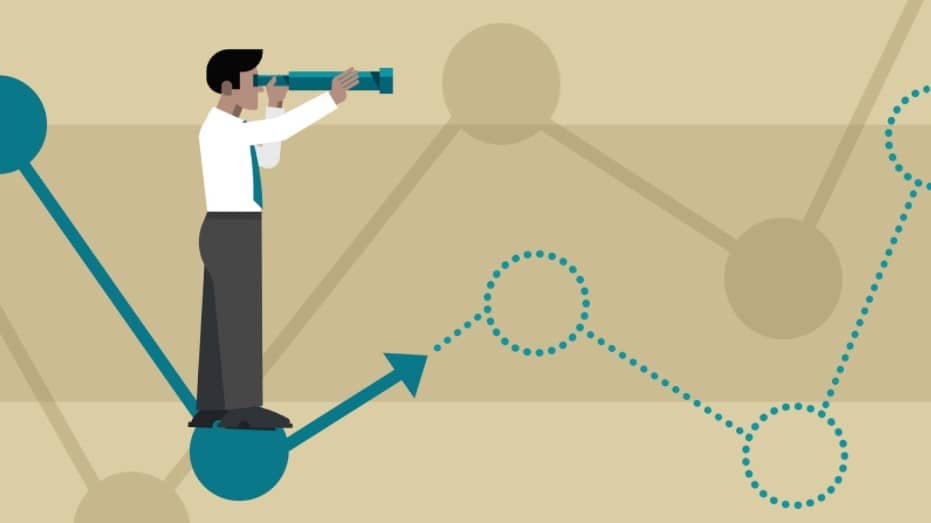
To remain competitive and keep up with modern technology, businesses have to take a new look at the way they operate. As a financial analyst, you probably know that operational performance directly affects financial performance.
Your company needs to align its workplace’s needs with updated operational processes. Investing in an effective performance management system should, therefore, be a priority.
A proper performance management system is crucial for businesses looking to survive in their respective field, allowing you to perform performance appraisals that can promote business growth. This is where an Enterprise Performance Management (EPM) system comes into play.
An enterprise performance management system can help guarantee that your company remains competitive in the current business world. A good EPM software enables you to monitor and predict business performance effectively, set goals, and ensure your company continues to thrive. It’s one of the most powerful tools for finance professionals, and in this article, we’ll explain why. Let’s get started.
What is Enterprise Performance Management?
EPM is a computer system designed to assist companies and businesses in linking strategies to their planning and the execution of their strategies. EPM applies the concept of performance management across all aspects of an enterprise, including sales, marketing, finance, manufacturing, and any other line-of-business operations.
EPM automates the three most essential functions of an enterprise: budgeting, strategy, and planning. It maintains these critical processes by helping managers control revenue and distribute scarce resources.
Although EPM is primarily a financial tool, it allows its functionality to benefit all departments in an organization through its ability to integrate with other business solutions.

What characterizes the best EPM software?
A good EPM software should have features that enable your organization to run seamlessly at full-steam. It should also provide you with the tools to help you make critical decisions regarding your business’ future. To top it off, it should reduce the time that you spend on planning, reporting, forecasting, and budgeting.
Careful consideration is required when choosing your EPM solution, and although you may feel that you do not have the technical aptitude required to make an ideal choice, here are a few guidelines that should make choosing easier.
Characteristics of a good EPM software
- Should have robust modeling capabilities
An effective EPM software should not only rely on Excel for modeling, it should also include driver-based modeling and scenario analysis. This allows you to build on and rely on highly accurate rolling forecasts.
A business model determines its viability, and as such, it is vital that you have the relevant information readily available for scenario analysis. A cloud-based EPM system ensures that data is available in one place, making modeling faster and more straightforward. EPM also allows you to link financial models and operations models to see the impact of the decisions that the business makes on your forecasts and plans.
- Capacity for integration
Technology is a complex beast. However, its complexities should not hinder system integrations that can supercharge an organization to maximize profits while effectively utilizing the available resources and workforce. An ideal EPM software should allow the user to integrate other core systems such as e-commerce, supply chain e.t.c.
Cloud-based EPM systems are the best for quick and easy integration because they support on-premise solutions while also working well with other cloud applications. The software should also allow for integration with Excel to enable users to use existing formulas for ease of transition and adoption.
- Should be complete and scalable
While choosing an EPM system, consider your immediate and future needs, and choose an EPM solution that supports the need for future growth. It should be able to grow with your business requirements as the need arises.
You may decide to go with a system with a few features and build upon it when the need arises, but a complete EPM system is ideal as it has all the essential features already installed. This helps you save money on upgrades for incomplete systems.
- Should allow flexible and comprehensive reporting
The use of multidimensional and transactional databases is included in today’s modern extensive reporting. A flexible feature on your EPM software means that users can easily access various reports from the different departments on the interactive dashboard. The data is easy to understand.
Since an EPM system is typically a financial tool, the non-financial team members can also benefit from the system’s flexible and comprehensive reporting feature.

Key features of Enterprise Performance Management
A good cloud-based EPM software is quickly becoming the go-to solution for performance management. As such, there are essential features that you should look for when choosing an EPM system. These should include:
1. Forecasting
EPM software creates rolling forecasts — a process of predicting the future over a set period by adding and dropping periods. Rolling forecasts provide predictions and performance of different areas in the enterprise.
These forecasts are often used in financial planning, supply chain management, and project management. A rolling forecast has a first in/first-out (FIFO) feature, which ensures that the forecast always covers the same amount of time.

2. Modeling
EPM has a in-built scenario modeling feature that enables users to create long-range forecast models in fast-changing business dynamics.
The scenario planning and modeling feature in EPM helps users anticipate changes and needs that may arise such as new hires, growth projections, or new regulatory restrictions.
An effective EPM system can link financial and operational processes with financial plans and forecasts, giving users valuable insights so that they can plan accordingly.
3. Planning
EPM allows its user to spend less time on processes and focus on strategy. Most of these platforms offer pre-built templates that allow you to leverage set frameworks. They can also allow you to create custom templates that can be used to fit the company’s requirements. This makes it possible to streamline operations by creating a more effective workforce growth with accurate data.
4. Interactive dashboard and visualization
Enterprise Performance Management (EPM) software has an interactive dashboard that displays critical information about the business’s performance. Visualization via the interactive financial dashboard helps with quick access to certain features in the system and allows users to make changes.
The dashboard also gathers information across the entire organization. It helps in creating financial reports that provide a reliable assessment of the organization’s performance, using the information to drive actions that maximize overall corporate performance.
5. Comprehensive reporting platform
The EPM software eliminates the need for multiple reporting systems. It provides current, complete, and accurate data by connecting the data, metadata, and processes that the different departments share.
An effective EPM solution provides team members with centralized data resources to view data dashboards and reports securely and access self-service reporting.
6. Collaboration and integration
A user can easily access processes and workflows through mobile devices and can also move between on-site and cloud data sources. Most EPM software have built-in cloud servers that store a company’s sensitive data, which allows users to pick and choose who they want to share the data with.
EPMs’ capability to integrate multiple business systems gives its users access to consolidated data, which makes for easier and manageable operational processes. This collaboration provides secure and seamless integration and functionality of vital workflows and processes.
Is there a difference between EPM, CPM, and BPM?
To answer this question, we must first understand what these acronyms mean. CPM stands for Corporate Performance Management, while BPM stands for Business Performance Management. They are all performance management software designed to help organizations achieve their financial goals and objectives.
Other terms usually associated with performance management are Financial Performance Management (FPM) and Business Intelligence (BI). FPM are the practices and processes used to determine the financial health of an organization. At the same time, BI is a term used to describe the various software solutions used to analyze an organization’s raw data.
These performance management systems may have the same ultimate goal, but their application in the organization has slight, subtle differences.
EPM versus CPM
CPM combines aspects of FPM and EPM with the analytical capabilities of Business Intelligence (BI) tools to highlight the corporate applications of performance management processes driven by the financial organization.
EPM, on the other hand, applies the concept of performance management across all aspects of an enterprise, including sales, manufacturing, and other line-of-business operations. EPM can be easily applied outside the corporate world in governmental and non-governmental agencies and educational institutions.
EPM versus BPM
The primary purpose of BPM is to understand the outcomes across an entire organization with the goal of improving the desired results through streamlining the operational processes. BPM measures performance results against a predefined goal.
EPM and BPM are the same, with the concept of BPM being embraced in 2003 and later morphing into the modern EPM. So, there is not much that differentiates between the two terms. A slight difference would probably be the addition of extra features in EPM that were not available previously in BPM.
The relationship and difference between ERP and EPM
Enterprise Resource Planning (ERP) and EPM are used in tandem to simplify business processes by enabling the automation and management of different business tasks from a single, consolidated software application.
An ERP system has a dashboard and built-in analytics in its single interactive database management system to help with the management of the whole business cycle including inventory management, manufacturing, production, and many more.
Initially designed for manufacturing industries, ERP systems have since expanded their services to the hospitality industry, educational institutions, healthcare, and government. However, each industry has its own ERP peculiarities, and a system from one industry may not be compatible with another industry.
While an EPM system allows you to consolidate data from all departments, an ERP system enables you to process all transactions and track all company or business resources. It offers an efficient and organized method to keep you up to date with your business finances.
One key difference between ERP and EPM is that EPM takes a relatively shorter time to be fully implemented, a matter of months, while an ERP system can take up to a year or two to be fully implemented. This is because ERP goes through a project step by step with a careful and thorough analysis of each step.
The number of users, the size of the company, and the complexity of the software chosen will affect the time required to implement the system. Typically, the bigger the organization, the higher the number of users, and the more complex the software, the longer it takes to implement it.
By enabling you to manage budget allocations and create forecasts, EPM software can integrate ERP data and data from other platforms such as CRM and HCM. In doing so, EMP enables you to have all data pertaining to the business resources and finance in one single platform, eliminating errors and oversights when generating financial reports and forecasts.
EPM trends and facts
- According to a remote work survey by PwC, around 90% of employees are expected to work remotely in the post-COVID era. This means that remote work is on the rise, and organizations need to rethink their core employee activities and upgrade them to accommodate the new trend. The need for a sound performance management system is on the rise.
- The growth rate of the EPM market is expected to grow at a Compound Annual Growth Rate (CAGR) of 11.7% by the year 2025, along with software and services. The demand for cloud-based EPM software and the rising need to improve business performance
- On a statistical chart published by statista.com, the size of the enterprise performance management (EPM) software market worldwide from 2019 to 2024 is shown. In 2019, the EPM software market was valued at 3.9 billion U.S. dollars and was projected to rise to 4.4 billion U.S dollars
Cloud-based EPM solution
With cloud-computing quickly becoming the norm in the modern business world, it is only natural that businesses and industries prefer cloud-based EMP solutions. This EMP software is provided as a service or a utility such as electricity, with subscription pricing where you only pay for the features you need. As the software allows you to operate it over the internet, you are not required to invest in computing infrastructure in-house.
Benefits of Cloud-based EPM solution
- One huge benefit of the cloud-based EPM software is its scalability that allows you to pay for what you need, when you need it without investing in additional hardware.
- Allows easy and universal access. Cloud-based EPM software can allow remotely located employees to access the system from mobile devices such as smartphones, laptops and tablets
- You don’t lose data due to unavoidable disasters such as power outages. Cloud-based computing allows you to back-up and recover your data and access it through the internet.
- It saves time and money by reducing finance’s reliance on manual processes and spreadsheets. The finance department is more productive and efficient when it does not spend most of its time collecting data and tracking errors.
- Provides security for your sensitive data. The biggest selling point of the cloud-based EPM software is its ability to provide a safe and secure storage system for the company’s data. It allows for only authorized users to access the data, making sure that an outsider cannot access it.
With a good cloud-based EPM software, you can have your company off the ground and up and running in a matter of weeks. You have your key processes streamlined which improves the accuracy of your reports and plans, making your finances more productive and efficient.
Advantages of an EPM system
- The automation of tasks and tools enables value-added business processes by gathering and consolidating data automatically and in real time. This eliminates the time-consuming tasks that were previously managed by accountants.
- EPM helps improve financial planning and analysis to reduce cost and risk so as to drive profitability with decisions based on facts.
- It has the ability to coordinate resources, activities and tasks across multiple departments and teams. It does this by taking existing workflows and allowing them to be managed in relation to their support of enterprise performance.
- It creates more time to simulate what-if scenarios and identify and capitalize on growth opportunities through its automated processes such as embedded calculations and data aggregation.
Conclusion
An effective Enterprise Performance Management system helps you build a stronger business while retaining your most valuable assets: your skilled workers, your time, and money. EPM software gives organizations the ability to develop key insights and strategies to run efficiently.
Investing in an EPM software should be a no-brainer for FP&A professionals looking to improve the accuracy of their financial processes. Its perks are clear to see, and its only drawback may probably be its high cost. But with proper use, it can give you real value for money within no time.
About Datarails
Datarails is an FP&A solution that allows for the connection and centralization of all organizational financial data from various systems (ERP, GL, CRM) alongside Excel spreadsheets and operational data. It also allows for the creation of automated reports (P&L, cash-flow, budgets, etc.), as well as a thorough analysis of consolidated data for the creation of business and financial insights.